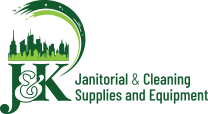When it comes to maintaining a clean and healthy environment, understanding the difference between cleaning and disinfecting is crucial. While the terms are often used interchangeably, they serve distinct purposes. Knowing when and how to clean versus disinfect can make all the difference in promoting hygiene and preventing the spread of germs.
What is Cleaning?
Cleaning refers to the process of removing dirt, dust, and impurities from surfaces. This process typically involves using soap or detergents combined with water to physically lift contaminants off surfaces. Cleaning reduces the number of germs but does not necessarily kill them.
Examples of Cleaning Products:
When Should You Clean?
Cleaning is ideal for everyday maintenance. It helps keep surfaces free from visible dirt and grime, improving appearance and preparing surfaces for disinfecting if needed.
What is Disinfecting?
Disinfecting, on the other hand, involves using chemical agents to kill bacteria, viruses, and fungi on surfaces. Disinfectants are designed to eliminate harmful microorganisms rather than just reduce their numbers.
Examples of Disinfectants:
-
Bleach-based
When Should You Disinfect?
Disinfecting is necessary in areas prone to germs, such as bathrooms, kitchens, and high-touch surfaces like doorknobs and light switches. It is especially important during flu season or after illness outbreaks.
Key Differences
| Aspect | Cleaning | Disinfecting |
|---|---|---|
| Purpose | Removes dirt and debris | Kills harmful germs and pathogens |
| Products Used | Soap, detergents, water | Chemical disinfectants, alcohol |
| Result | Reduces germs | Eliminates germs |
| Frequency | Daily maintenance | As needed or during outbreaks |
Practical Tips for Effective Cleaning and Disinfecting
-
Read Labels Carefully: Ensure products are approved by the EPA for killing specific germs.
-
Follow Contact Times: Allow disinfectants to sit for the recommended duration to be effective.
-
Use the Right Tools: Microfiber cloths and disposable wipes can make cleaning and disinfecting easier.
-
Focus on High-Touch Surfaces: Pay special attention to areas like doorknobs, light switches, and handrails.
-
Wear Gloves When Necessary: Protect your hands from harsh chemicals.
Conclusion
Both cleaning and disinfecting play vital roles in maintaining a safe and sanitary environment. By understanding the differences and knowing when to use each method, you can ensure better hygiene and minimize the risk of spreading illnesses.
If you're looking for high-quality cleaning and disinfecting products, check out our shop to find the best solutions for your needs!

 Search
Search
 My Account
My Account
